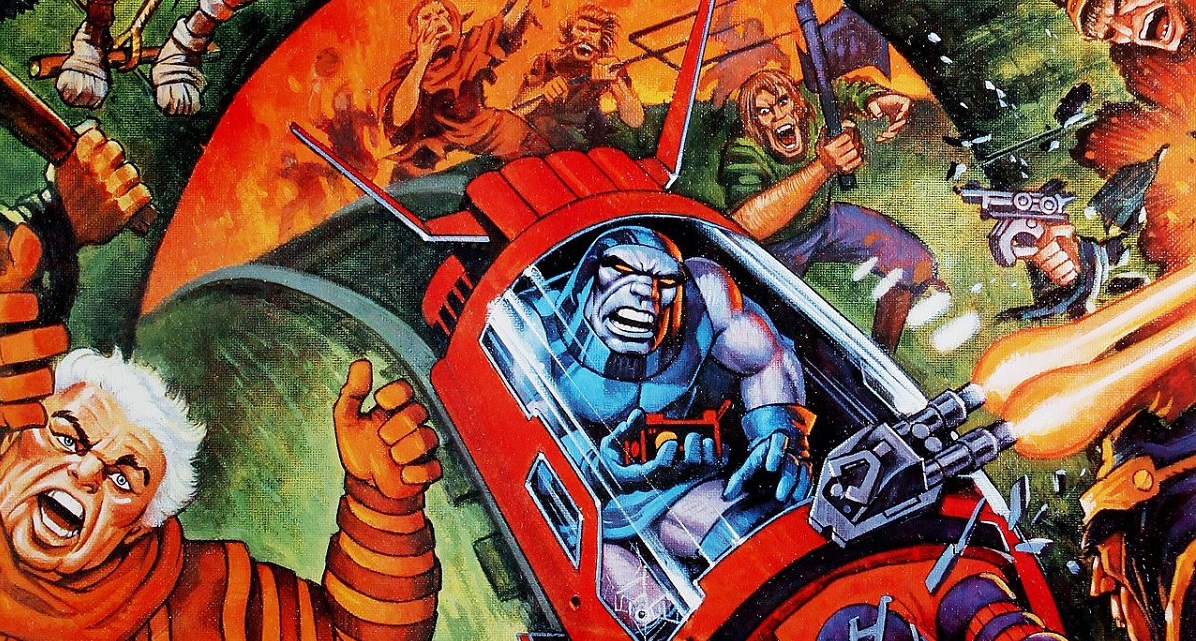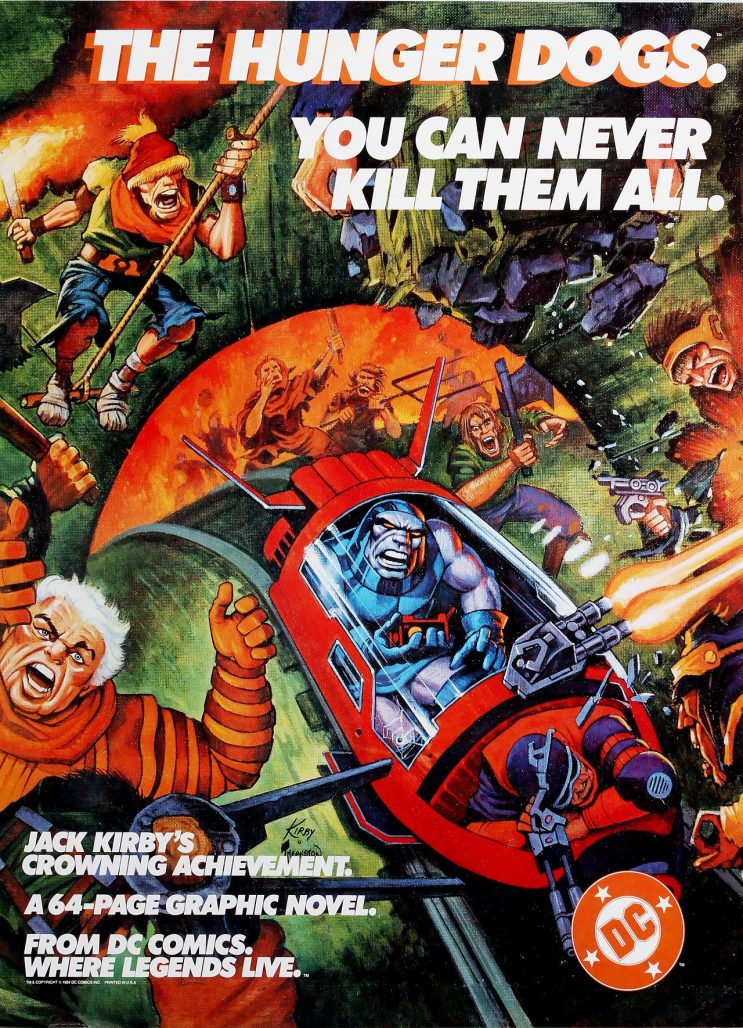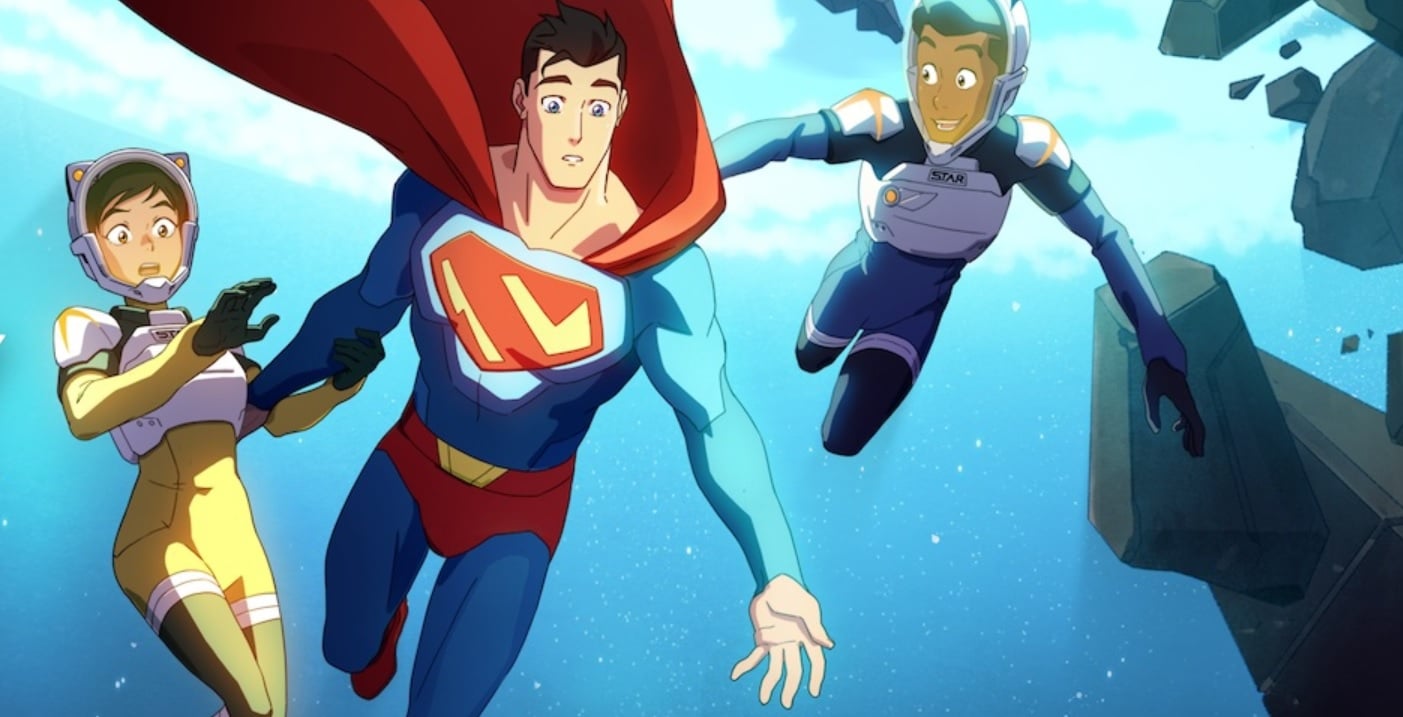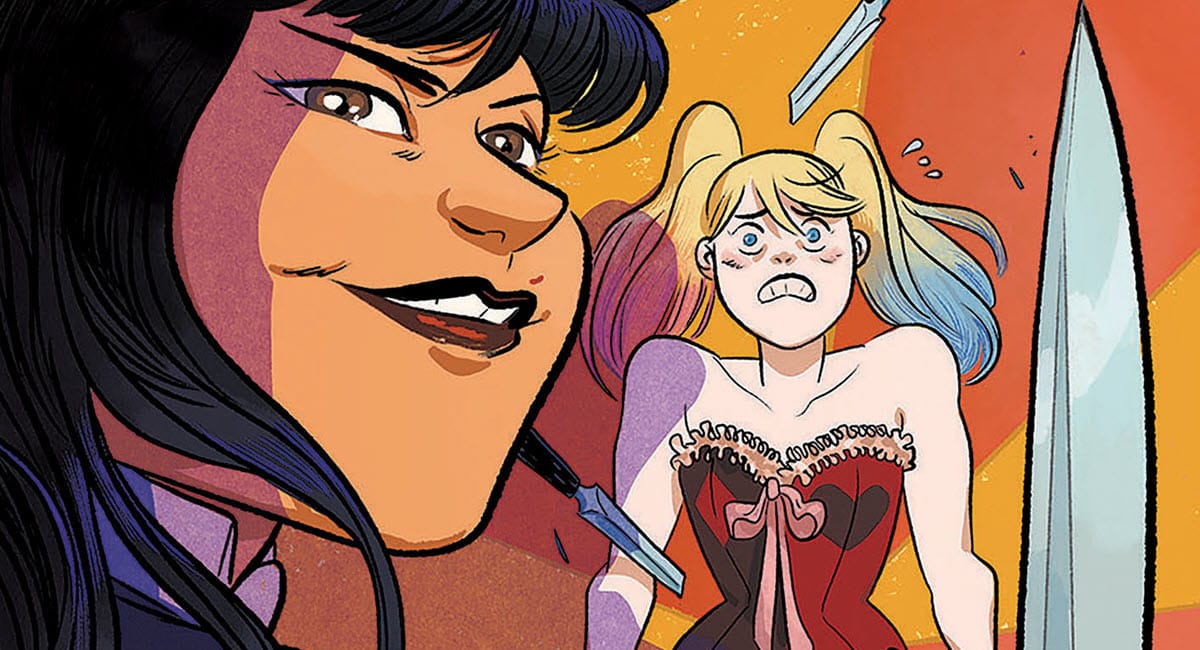In the ’70s, when Jack Kirby went to DC he sought to create a new mythology. An epic writ large across the DCU, a Fourth World where New Gods would fight for the fate of the universe. Good and evil. New Genesis vs. Apokolips. With a throughline of a son being raised by the enemy destined to fight against his monstrous father. But it wasn’t originally completed. Rather, more than a decade later, following reprints of the original Kirby issues of the New Gods series came new material there and eventually a conclusion in The Hunger Dogs from Kirby, D. Bruce Berry, Mike Royer, and Greg Theakston (with Bill Wray & Tony Dispoto).
The Hunger Dogs is perhaps Kirby at his most Shakespearean. Even more than Etrigan’s dialogue in The Demon. Setting up Darkseid as kind of an analogue to both King Lear and Macbeth. It very much works here, with Darkseid’s monologues fitting the stakes of the death of a world, coming up with a new way to destroy his foes on New Genesis, desperately hanging on to power over his own world, and the turnabout of his son trying to end his machinations. There are some interesting ideas here, seemingly pulling from the Cold War as inspiration, with a fear from stockpiling weapons and a changing proletariat. Along with a bit of a love story thrown in with Orion figuring out whether or not anyone could possibly care for him, despite his normal beastly appearance and standing as Darkseid’s son.
Now, this next bit might get me tarred and feathered, but I think that the latter day Kirby art here is some of his ugliest. Yet also some of his most accomplished. His characters grow more hideous faces, at times becoming amorphous blobs, but his layouts, blocking, and sheer storytelling are that of a master. It’s not a case of declining skill, rushed art, or anything like that, it feels like an intentional choice. As if we’re meant to see the ugliness of Apokolips and Darkseid through their appearance as much as New Genesis is more refined (though I’d still be reluctant to call any of them “pretty”, even Lonar and Lightray).
Some of the differences in art, like line weight and shadows that we see throughout the story, can probably be attributed to both two inkers working on it in D. Bruce Berry and Mike Royer, as well as Greg Theakston and team’s reconstruction to go along with his colours. It’s by no means distracting, but it’s interesting to see how different people approached Kirby’s lines. Especially contrasted with the early New Gods work that had Vince Colletta. Berry and Royer I feel likely keep more of Kirby’s original lines (as evidenced also by the pencils included in the collections). There’s also a nice hand-crafted quality to the lettering from Berry and Royer and a kind of rustic glow to Theakston’s colours.
You can definitely read The Hunger Dogs by Kirby, Berry, Royer, Theakston, Wray, and Dispoto on its own without any previous knowledge of the Fourth World saga. It stands there as an interesting tale of a despot at the end of his days struggling to hold on to power. But it becomes much richer in context, even if just reading the New Gods series, blossoming into a capstone to a fascinating period in Kirby’s career.
Classic Comic Compendium: The Hunger Dogs by Jack Kirby
The Hunger Dogs (DC Graphic Novel No. 4)
Story & Pencils: Jack Kirby
Inks & Letters: D. Bruce Berry & Mike Royer
Ink Reconstruction & Colouring: Greg Theakston with Bill Wray & Tony Dispoto
Publisher: DC Comics
Release Date: February 26, 1985
Also available collected in the Fourth World Omnibus and New Gods by Jack Kirby
Read past entries in the Classic Comic Compendium!














Jeez – I’ve forgotten all about this. It was released at the time while I was young 21 year old making my exodus from Parsippany, NJ to San Diego – so I wasn’t spending money on ‘big ticketed items’ at the time of my move.
Now your article has given me renewed vigor to go and seek out.
~
Coat
Just curious or maybe I’m not understanding, but how is reprinting a single graphic novel a compendium?
Cary, I’m glad to see that the column inspired you to check out The Hunger Dogs. I feel like a lot of Kirby’s Fourth World work has been mined for characters, but kind of overlooked by many of us for long. I’ve enjoyed the relatively recent re-releases of his DC work to gain more eyes and appreciation.
Rick, “Classic Comic Compendium” is the name of the column. It’s in reference to these articles being a compendium of classic comics, not that the comic being discussed in the column is a compendium. Hope that clears it up.
Comments are closed.